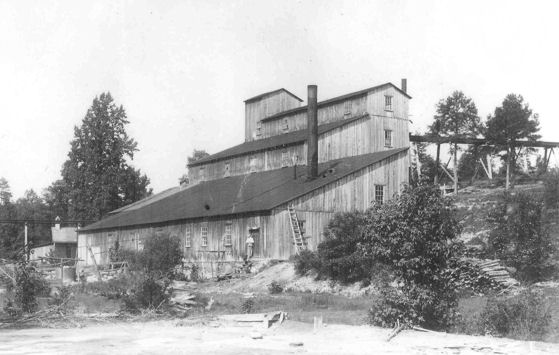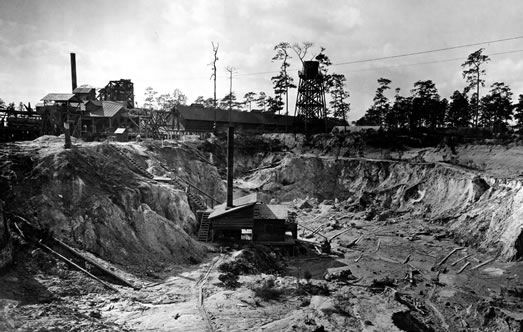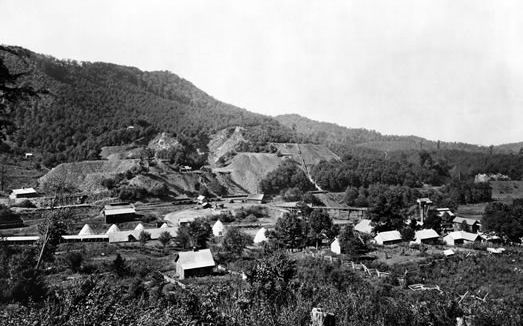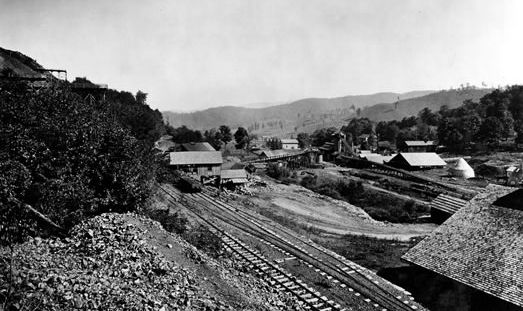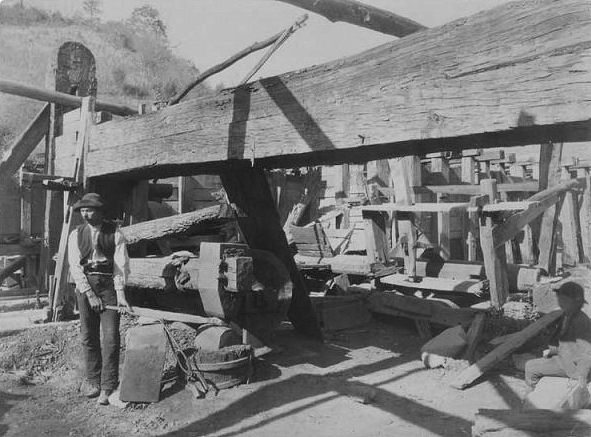North Carolina Mines
North Carolina Gold Mine
Cranberry Iron Mines Ore Pit - Avery County, NC
Cranberry Iron Mines - Avery County, NC
Cranberry Iron Mines - Avery County, NC
The history of the Cranberry Iron Mine can be traced back to 1780 when Reuben White took out a 110-acre land grant. In 1820 production at the mine began, with ore reduced in a Catalan forge. In 1876, the mine was acquired by the Cranberry Iron and CoalCompany, which operated systematic mining there until 1927. A narrow-gauge railroad was constructed in 1882 to carry ore between the mine and the Cranberry Iron Works in Johnson City,Tennessee. The building foundations are all that remain of the mill operations. Cavernous mine workings extend approximately 2,500 lateral ft. into the mountainside. Multiple levels with huge rooms are connected to the main adit by ramps and passageways.
Iron forges existed well before the Civil War in the vicinity of Cranberry, North Carolina where the largest vein of iron ore in the U.S. had been discovered up to that time. During the war iron was produced for the Confederate Army at Cranberry. In 1873, Ario Pardee and his associates purchased the iron works and formed the Cranberry Iron & Coal Company. Pardee also purchased the abandoned ET&WNC railway line and essentially built the railway line from 1879 through 1882, an impressive engineering and construction feat. The ET&WNC connected to the East Tennessee Virginia and Georgia Railroad (later Southern Railway) in Johnson City and both railways shared the same Johnson City depot from 1891 through 1912. Completion of the ET&WNC was a major factor in Johnson City's growth from a village of 685 persons in 1880 to a town with a population of 4,161 in 1890. Jordan C. Hardin, an original investor in the ET&WNC and on the Board of Directors, was a key local connection in the railway's early development and his son, George W. Hardin, managed the narrow gauge line from 1900 until his death in 1922.
In Johnson City industrialist and former Union Civil War General John T. Wilder led a team of investors bent on establishing Johnson City as a major iron and steel manufacturing center during the 1880s. Located near both the Cranberry Mines in North Carolina and the coal fields of Virginia, Kentucky, and West Virginia, Johnson City was seen as a strategic crossroads and transfer point for Appalachian mining interests and related transportation ventures. Wilder constructed the Carnegie (later Cranberry) Furnace in East Johnson City and founded the Carnegie Land Company. However, discovery and opening of the Mesabi iron region of Minnesota produced a glut of iron on the market, depressed iron prices dramatically, and negatively affected the profitability of the Cranberry Mines and Wilder's investments. Read a biography of General John T. Wilder.
Following the financial failures of the Wilder companies during the 1890s, the Cranberry Furnace was finally completed in 1902 and iron ore shipments from the Cranberry Mines to Johnson City gave the small ET&WNC Railway a core business through World War I. In addition to foundries and related iron works, Johnson City had a large number of hardwood and furniture manufacturing interests also dependent upon the ET&WNC and other railways for raw materials.
Cranberry Iron Mines - Avery County, NC
